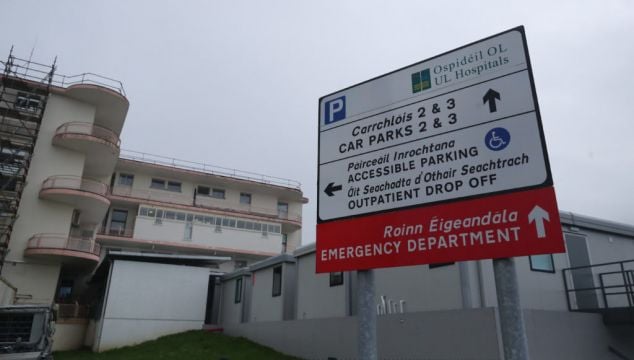The terms of reference for the health watchdog’s statutory inquiry into overcrowding at University Hospital Limerick have been published.
The Health Information and Quality Authority (HIQA) said its review will include whether there should be a second emergency department in the mid-west region.
The terms were developed by the authority following a request by the Minister for Health, Stephen Donnelly.
Mr Donnelly has said conditions were improving in almost every hospital in Ireland, but that University Hospital Limerick (UHL) is “on its own in terms of the increase in patients on trolleys”.
Reforms recommended at UHL have not been implemented in full yet, the minister said, but added that there is “no reason why there shouldn’t be” improvement at the hospital by the winter.
Scheduled care across five hospitals and injury units in the Mid-West has been cancelled indefinitely since the second week in August in order to “de-escalate the UHL site”.
HSE chief executive Bernard Gloster said he could “not stand over” the amount of patients he witnessed at UHL waiting to be provided with a “reasonable level” of care.
There has been a particular focus on emergency services at UHL since 16-year-old Aoife Johnston died at the hospital in 2022 after waiting for 12 hours to be assessed for suspected sepsis.
An investigation led by former chief justice Frank Clarke found that overcrowding in the hospital’s emergency department was “endemic”.
In its terms of reference document, HIQA said there has been “significant overcrowding” at UHL’s emergency department in recent years.
It said that population increases in the mid-west region had partly contributed to overcrowding, but added that the scale of it had “consistently been greater” than that at other hospitals.
It said that based on a HSE report in 2008, three emergency departments at smaller hospitals in the region – Ennis, Nenagh and St John’s in Limerick City – were to be closed and services would be centralised at what is now UHL.
This was also based on a HIQA assessment of failures at Ennis Hospital that concluded its urgent and emergency services were unsafe.
Investment, including increasing in-patient beds, was recommended at UHL which did not occur due to cuts imposed during the economic downturn.
HIQA noted that since 2019, there has been a 30 per cent increase in staff at UHL, or an extra 1,200 healthcare workers, which includes emergency consultants, non-consultant hospital doctors and emergency department nurses.
Its statutory inquiry aims to identify what capacity would be needed above what has already been delivered.
“This review will aim to identify what additional capacity, if any, above that which has been delivered or which is in train, would be required,” it said.
Among its eight terms of reference are the establishment of an Expert Advisory Group to inform HIQA’s approach; to establish a Clinical Advisory Forum with relevant clinical and nursing representatives; and to review health service capacity in the HSE mid-west region.
On this last point, HIQA said: “The outputs from this work will be considered along with the other work streams to inform key considerations and assumptions around best practice in the design and delivery of population needs relating to urgent and emergency care, aligned to current and project population numbers.”
It said it would also consider the findings and recommendations of Mr Clarke’s report.
The review is expected to be completed in the summer of next year, when a report of the findings and recommendations will be provided to the Health Minister and published on the HIQA website.







